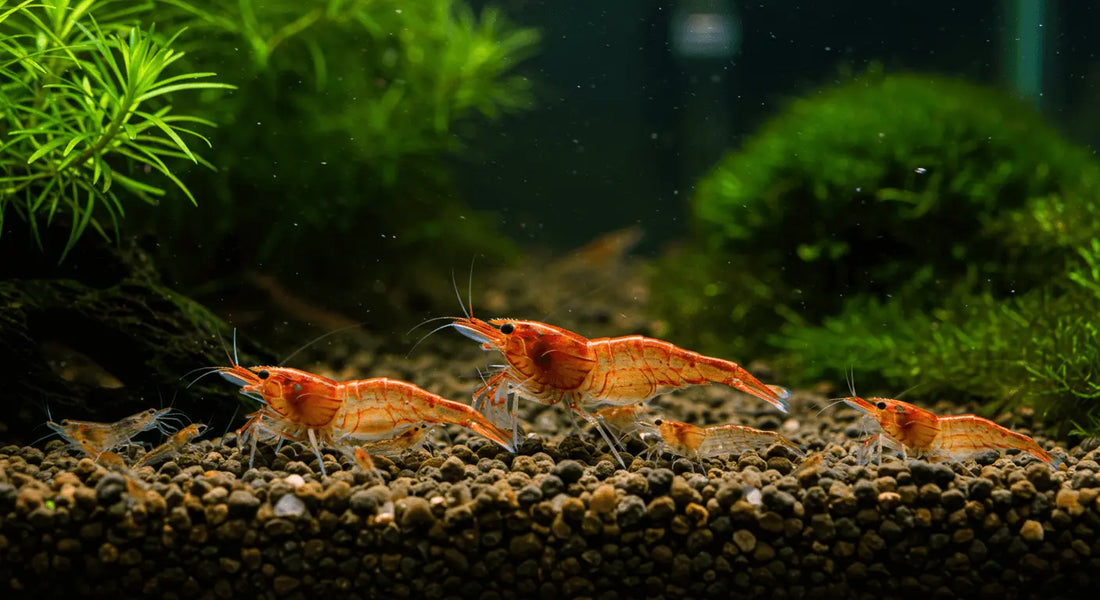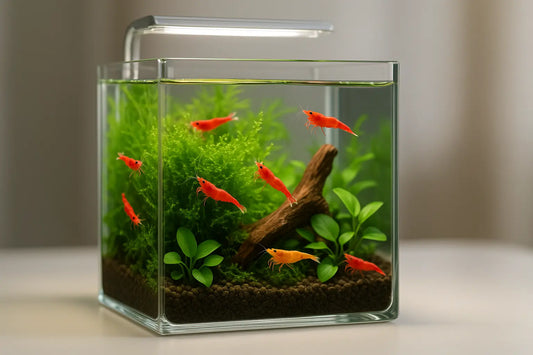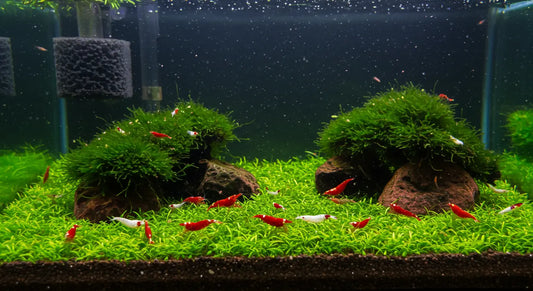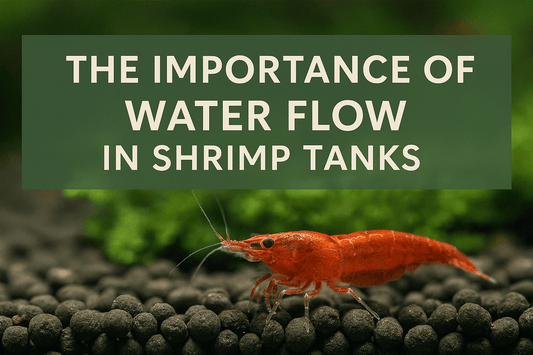
How to Breed Freshwater Shrimp Successfully: A Step-by-Step Guide
Breeding freshwater shrimp is a fun and rewarding way to level up your aquarium game. Whether you’re just starting out or ready to tackle more advanced species, this guide breaks it all down for you. From picking the right shrimp to raising tiny fry, we’ll cover everything you need to know to succeed.
At TeachersPetNW, we’re all about helping shrimp lovers thrive. Let’s dive into how to breed freshwater shrimp successfully with tips you can actually use! By the end, you’ll be ready to turn your tank into a shrimp-breeding paradise—and maybe even impress your friends with your skills.
1. Choosing the Right Shrimp Species for Breeding
First things first—pick shrimp that match your skill level. You’ve got two main options: Neocaridina and Caridina. Each brings something unique to the table.
- Neocaridina: Super hardy and great for beginners. Try the vibrant Bloody Mary Neocaridina Shrimp—they’re easy to breed and look amazing in any tank.
- Caridina: A bit trickier but worth it for their stunning colors. The Extreme Blue Bolt Caridina Shrimp is a gorgeous choice if you’re up for the challenge.
Not sure which is right for you? Check out our guide on Neocaridina vs. Caridina Shrimp to figure out the differences and pick your fave. Neocaridina are more forgiving, while Caridina demand precision—choose based on your comfort zone.
Pro Tip: Go with Neocaridina if you’re new—success early on keeps the vibes high!
2. Setting Up the Perfect Breeding Tank
Your tank setup is clutch for breeding. A happy environment means more shrimp babies. Here’s what you need to nail it:
- Size: A 10-gallon tank works great—small enough to handle, big enough for a colony to grow.
- Hiding Spots: Shrimp love places to chill. Add some Cholla Wood for shelter and extra biofilm (yummy for shrimp!). It’s also a natural vibe that fry adore.
- Filtration: Keep it gentle with a Qanvee Bio Sponge Filter QS100A so fry don’t get sucked up. Strong currents are a no-go.
- Substrate: Stick to something neutral like fine gravel or sand to keep water steady.
Quick Story: I’ve seen a berried shrimp hang out in Cholla Wood for days—it’s like their safe house! Bonus: it looks dope in your tank.
3. Mastering Water Parameters for Shrimp Breeding
Water is everything for shrimp—it’s their whole world. Get these dialed in, and breeding will happen like clockwork:
- Temperature: 72-78°F (22-26°C) for Neocaridina; 68-74°F (20-23°C) for Caridina.
- pH: 6.5-7.5 for Neocaridina; 5.5-6.5 for Caridina.
- GH (General Hardness): 6-8 dGH for both.
- KH (Carbonate Hardness): 2-4 dKH for Neocaridina; 0-2 dKH for Caridina.
- TDS (Total Dissolved Solids): 150-250 ppm for Neocaridina; 100-200 ppm for Caridina.
Use Salty Shrimp Bee Shrimp Mineral GH to remineralize RO water and keep things stable. Test weekly with a good kit and tweak slowly—shrimp hate sudden changes more than I hate running out of coffee.
Added Value: Consistency is king. Small fluctuations can stress shrimp out and stop breeding cold. Stick to a routine, and you’re golden.
4. Feeding Your Shrimp for Breeding Success
Good food = happy, breeding shrimp. A solid diet keeps them healthy and ready to multiply. Here’s the menu:
- Daily Grub: Complete Envy Shrimp Envy Food covers all the bases—protein, vitamins, the works.
- Treats: Toss in some Mulberry Leaves—shrimp go wild for them, and they’re a natural boost.
Fun Fact: I dropped a mulberry leaf in once, and it was shrimp party central in minutes! It’s like their version of pizza night.
Extra Tip: Don’t overfeed—uneaten food messes with water quality. A little goes a long way.
5. The Shrimp Breeding Process Explained
When the tank’s vibe is right, shrimp do their thing naturally. Here’s how it goes down:
- Mating: Males chase females (it’s kinda cute), then females get “berried” with eggs under their tails.
- Gestation: 3-4 weeks later, depending on species and temp, eggs hatch into mini shrimp.
- Fry: Babies pop out fully formed—no larval stage, just tiny versions of mom and dad.
For more on Caridina specifics, check out our Caridina Shrimp Breeding page. It’s a chill process—just keep the tank happy, and nature does the rest.
6. Caring for Shrimp Fry: Ensuring Survival
Fry are tiny but tough if you set them up right. Here’s how to keep them thriving:
- Hideouts: More Cholla Wood keeps them safe from adults who might snack on them.
- Food: Snow Envy Shrimp Envy Food is perfect for their little mouths—powdered and packed with nutrients.
- Water: Small changes (10-15% weekly) keep it clean without shocking them.
Added Insight: Fry don’t need much—just safety and food. Watch them swarm the Cholla Wood—it’s like a shrimp nursery!
7. Overcoming Common Shrimp Breeding Challenges
Hit a snag? No stress—here’s how to troubleshoot like a pro:
- No Breeding: Double-check water params and aim for a 1:2 male-to-female ratio. Too many dudes can throw off the vibe.
- Fry Not Making It: Up the hiding spots with Cholla Wood. Poor water quality’s usually the culprit.
- Molting Issues: Boost calcium with Shell Envy Mineral Shrimp Envy Food—strong shells mean happy shrimp.
Real Talk: I once lost a batch of fry to a sloppy water change—learned my lesson the hard way. Slow and steady wins this race.
8. Conclusion: Your Shrimp Breeding Adventure Awaits
Breeding freshwater shrimp is all about prep and patience. Get your tank dialed, feed them right, and watch your colony grow—it’s that simple. Whether you’re starting with Bloody Mary Neocaridina Shrimp or leveling up to Caridina, you’ve got this.
Ready to start? Explore our shrimp goodies at TeachersPetNW and kick off your breeding journey today. Let’s make it happen, bro!


